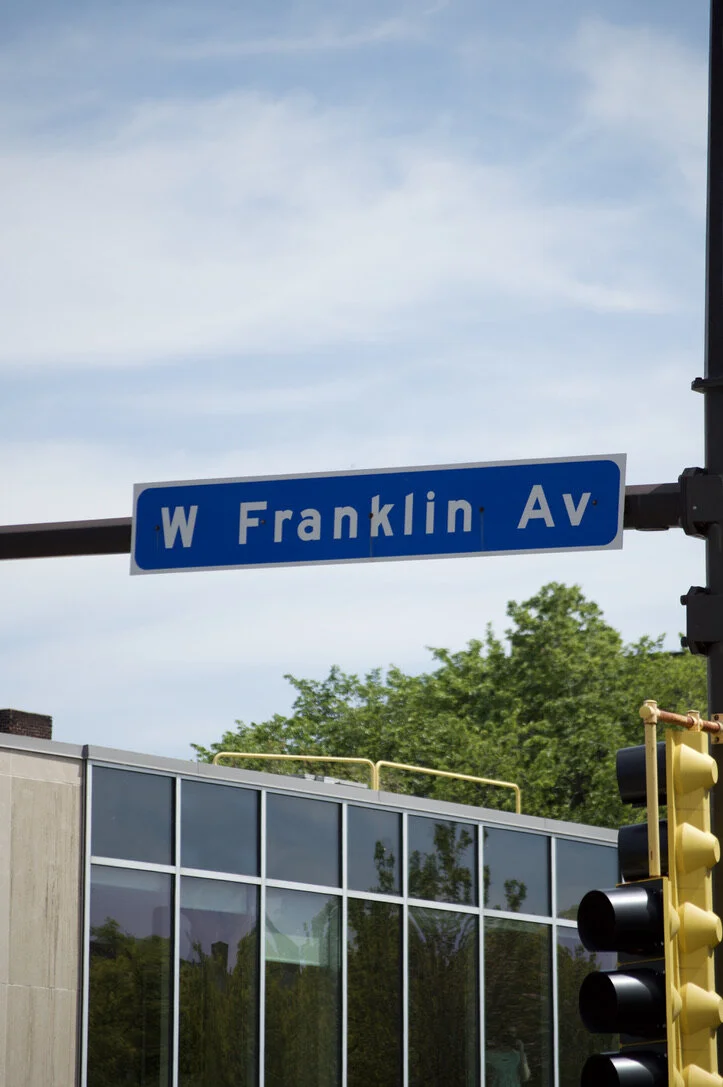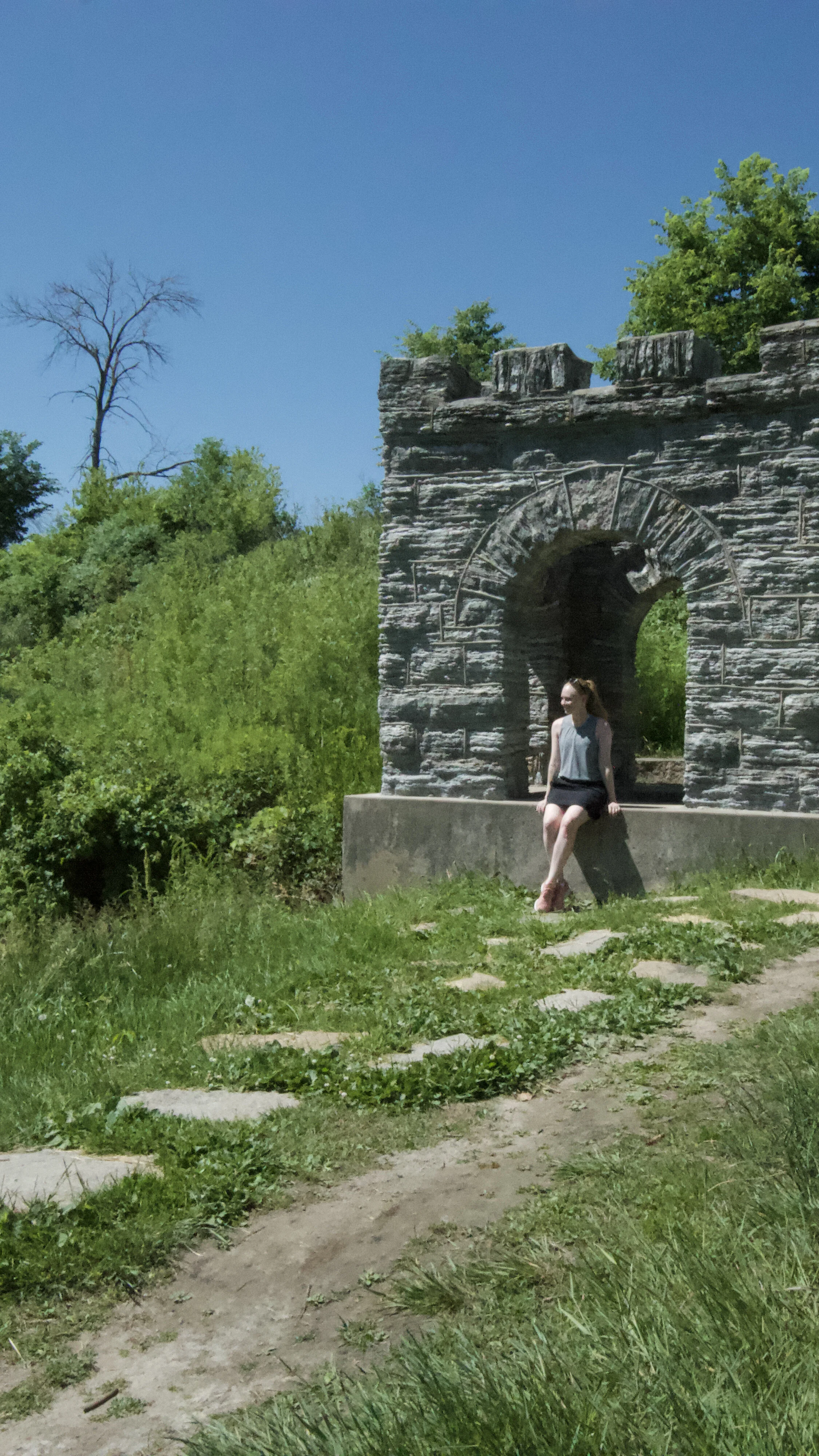The Myth of Nina's Coffee Cafe
I once heard a rumor that there is a tunnel between Nina’s Coffee Cafe (pronounced NYE-nuh) and the Cathedral of St. Paul. Do the priests have a caffeine addiction so intense they need a direct line? That would be interesting, but more interesting is the rumor that Nina’s Coffee Shop was once a brothel. Holy Moses! Could it be true? Are there really tunnels under St. Paul?
TUNNEL TELEPHONE GAME
Did you ever play the telephone game? One person whispers a secret message into the first person’s ear. Only having one chance to get the message, the listener then turns to their neighbor and passes the message on. The passing continues around a circle, or down the line and at the end the final person reveals what message they have heard. Typically the message has become so garbled that it becomes total nonsense. I think I was at the end of that line when I first heard about Nina’s tunnel. The truth is so much more interesting.
OFF THE MAP
My first hint that something was amiss is easily seen on any map. The Cathedral is almost a third of a mile away from Nina’s. It is highly unlikely that a tunnel of that length could be dug without notice, considerable expense, or one of the workers spilling the beans.
My second shot of truth was finding that Nina’s Coffee Shop does NOT occupy a former brothel. I also thought it was strange that there was no mention of the racy past on their website or in any marketing materials. The coffee shop does share that it is named after a famous madam, named Nina (pronounced NINE-ah) and her story is truly interesting.
RED LIGHT DISTRICT
Nina Clifford (real name Hannah Steinbrecher ) arrived in St. Paul in 1885. Born in Canada and with family in Detroit, no one knows why she came to Minnesota. A widow, her options for making a living were limited to working as a waitress, a domestic servant, or other menial jobs with little chance of advancement. It can only be speculated that a lack of options forced Nina into her new career.
In 1887, Nina bought two building lots on Washington Street in Saint Paul. This street, already established as part of a red light district by the time of her arrival, no longer exists today. (Today, we know it as the site of the Science Museum of Minnesota.) Back then, this area was known as “down the hill” since it was below a large bluff and was considered an undesirable part of town. Other madams had already run successful “boarding houses” along the same street. Maggie Morse, “Long Kate” Hutton, and “Dutch Henriette” Charles all had rollercoaster careers including 100s of arrests, citations, fines, fights, illnesses, successes and failures.
Nina built two buildings at 145 and 147 Washington, just a half block away from the police station and the city morgue. This proximity to the police was not a deterrent, but in fact a convenience. All of the madams and “inmates” (a common nickname for the prostitutes) were arrested on a regular, monthly basis. Under this system, the madams were expected to run orderly businesses and treat their workers fairly. They were friendly, or at least familiar, with the police and knew they could call for help when needed or customers got out of hand. This created some regulation of the sex industry and allowed scarce police resources to be allocated to other more serious crimes. The fines provided revenue for the young city, which, at the time, had few other sources of income. The chief disadvantage of such a system was that it made the city a partner in the sex trade by allowing it to openly exist.
UNDERWORLD RESORT
Referred to by the Pioneer Press as an “underworld resort”, Nina’s brothel became the most lavish and the most prominent brothel in Saint Paul. Three maids as well as a cook, housekeeper, porter and musician maintained a clean and entertaining atmosphere. The rooms were elegantly decorated to suit their clients’ taste. A chandelier taken from the building when it was demolished in 1937 hangs in the office of the Saint Paul Mayor today. (Yes, really.)
It’s easy to hear the term “underworld” and think of these brothels as secretive and scandalous, with madams living in hiding, under darkness. In truth, the madams had power, money, and influence throughout the city. They were so notorious that the newspapers reported on them regularly - including their wardrobes. Their dress fashions were their best advertisements. Lists of names and specific addresses, aimed at shaming the businesses into closing, usually just brought in more customers.
RICHER THAN THE RICH
Nina was an innovative business owner and was known to have accepted diamonds as payment. One delivery boy reported seeing a box full of hundreds of loose cut gems in her office. She also began offering her girls’ services on credit, allowing customers to sign IOUs and pay later. One of these customers made headlines.
Alfred Kittson was the youngest son of Commodore Norman Kittson. The Commodore was a Minnesota founding father, former mayor, James J. Hill’s business partner and builder of the mansion that would one day be replaced by the Cathedral of Saint Paul. Kittson County is named after him. When the Commodore died in 1888 his eleven children inherited millions. Young Alfred was only 14 years old and was put in the care of his older siblings. His inheritance was managed by a trust to be distributed to Alfred at regular intervals. Apparently Alfred was very aware that he had lots of money and he began spending it on an extremely lavish lifestyle. He quickly blew through his first allotment of cash and began issuing IOUs against the money he would inherit in the future. His oldest brother and guardian (Norman Jr.) began issuing notices in the newspapers telling people NOT to give Alfred credit. This didn’t stop Alfred. He kept spending and living a wild life.
Nina was more than happy to help him spend his money, but she did expect to actually get paid. In 1898, Alfred was so indebted to Nina that he signed over to her all of his remaining interest in his father’s estate. According to the filing he owed her $18,000 (nearly $500,000 today). The filing prompted all of his other creditors to come forward. In the end, the people he owed money to settled for 80% of their claims. Nina was a businesswoman and she wasn’t going to let anyone get away with not paying their bills – not even one of the richest, most powerful families in the city.
Nina was influential, and more importantly, knew influential people.
THE MINNESOTA CLUB MADAME
In 1869, the leading gentlemen of Saint Paul emulated the old clubs of the east coast creating a private social club of their own. The founding officers included (former governor) Henry Sibley, (district judge) Westcott Wilkin, (former mayor) Norman Kittson, and (future ambassador) Stanford Newel. By 1909, a growing membership required the club to move into expanded quarters and they selected the site of the Metropolitan Hotel (at the corner of Washington Street and Kellogg Boulevard), which was about to be demolished. This new location is the key to the rumors of the tunnels because it was essentially just across the street from Nina’s brothel. The brothel’s location below the bluff on which the new club sat does seem to offer the possibility of a tunnel linking the two.
Nina’s history with the Minnesota Club didn’t begin when they became neighbors in 1915. In fact, when Nina first arrived in Saint Paul, she had lived at a boarding house on Cedar Street near Third Street, just a few blocks from the Club’s earlier location. Some speculate that this was when she made her first entry into her new vocation.
There is no evidence that the location of her brothel, or any previous relationship, influenced the decision of the club’s building committee to move to their new location. Nina did, however, leave a lasting mark on the Minnesota Club.
Nina Clifford died in 1930 while visiting family in Detroit. She was 79 years old and had maintained a successful business for over 30 years. Shortly after her death, the city demolished her buildings on Washington in an effort to clean up the red light district. A brick from the building was installed in the Minnesota Club with a plaque in honor of their favorite madam.
In 1980, the Minnesota Club’s Annual Tennis and Golf Tournament held at the Somerset Club featured a special guest. A woman who had lived with and worked for Nina shared her remembrances of Nina with the members. The awards presentation included a trophy named in Nina’s honor and inscribed: "In Memory of the Athletic Director of the World’s Second Greatest Sport." (Wink, wink)
The special guest presented the members with a painted portrait of Nina. The portrait was hung in the Nina Clifford Room at the Club - at least until it was discovered that it was actually just a copy of another painting, of another young woman - sort of like a stock photo in today’s terms.
In 1937, as Clifford’s buildings were slated for demolition, former four-time mayor Laurence Hodgson (who wrote under the pseudonym Larry Ho) published a poetic tribute in the Pioneer Press:
The windows are grimy and covered with dust
In that old house under the hill
The door hinges rusty, the lock is bust
The spider webs cover it still
No longer do gay lights their welcome convey
Inviting the wayfarer in
To choose from the bevy, his favorite lay
To dally a while and sin
Gone are the sofas and plush covered chairs
From the parlor once happy and bright
No longer do douche pans in bedrooms upstairs
Clank busily all thru the night
No more do fat durghers play and carouse
And some pretty blonds on their backs
For Nina is dead and her once famous house
Is sold to pay up the back tax
They’re widening the street so they’re tearing it down
The whorehouse that was once the pride of the town
Soon won’t be worth more than a fart
It’s stone they are taking the morgue to repair
A purpose appropriate - true
For many a stiff has been laid in them both
Even as me and you
The extraordinarily public tribute to Nina, by a former mayor no less, can only speak to how ubiquitous Nina and her business was in Saint Paul. Was this a sign of how close of a relationship the club had with Nina’s offerings? Or was it a sign of respect for a woman who some estimate created a business more successful and long-lasting than many of the male members?
AND WHAT ABOUT THOSE TUNNELS?
Before construction could get underway for the building of the Science Museum of Minnesota in 1997, an archeological dig of the site was completed for the sole purpose of discovering the remains of Nina’s brothel. Sixty-seven years after her death, there was enough interest to allow a team a full month to see what they could find. Plenty of standard household debris was found including bottles, pipes, dishware and medicines. The stone foundation was uncovered and mapped. They did not discover any tunnels outright linking the brothel to the Minnesota Club, but there was a gap in one foundation wall that they could not affirm or deny (but they were pretty sure that there was never any tunnel). It’s a wonderful rumor and adds to the myth of Nina and her influence over the city. I also think the rumors are one hundred percent the Minnesota Club’s fault.
In 1909, during demolition of the Metropolitan Hotel and before building the new Minnesota Club, workers discovered a series of tunnels dug with hand tools in the bedrock foundation. Although published in the newspapers, there was never any explanation found for why the tunnels were there. Construction continued and the formal opening of the new club was in 1915. So, there were tunnels beneath the Minnesota Club, but they never connected to anything. This then, was the beginning of the rumors about the tunnels.
Then, in 1931 (after the stock market crash and the onset of the Depression) the club was broke and then-president Joe Shiely tried getting creative in hopes of saving the club. It is said that he proposed digging a tunnel to Nina’s and creating a turnstile system to charge a fee for its use. The members declined the idea, not because they thought it was a bad idea, but because the construction would be too expensive. It is extraordinarily likely that this story is just fancy simply because in 1931 Nina Clifford had already died and her brothel had closed - but it does show how the rumors continued to take hold and grow through the years.
The Minnesota Club survived and is still in the same location today. Although they have downsized and now share the building with the Minnesota Wild Hockey Team and a restaurant - there is still a dining room named after Nina.
The exclusive nature of the Minnesota Club combined with the underworld quality of the red light district created a fertile ground for imaginations to flourish. Nina’s Coffee Shop is the perfect tribute for Ms. Clifford. A visit to her namesake cafe neither confirms nor denies, provides great service, and operates in broad daylight - just like Nina.











